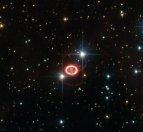Astroparticle and Exotics
Proton Decay

Grand Unified Theories: three of the four fundamental forces we know of, namely electromagnetism, the weak interaction, and strong interaction, share very similar mathematical structures (local gauge theory) that lead particle physicists to believe that they have a common origin in a larger theory. Such a "unification" of the electromagnetic and weak interactions into an "electroweak" interaction is known to happen, resulting in parameters such as coupling constants and masses governing the two interactions to be inextricably connected. "Grand Unification" or "Grand Unified Theories" (GUTs) posit that there is further unification such that the strong and electroweak interactions arise from a single gauge group with one coupling constant.
Proton Decay: A generic consequence of GUTs is that they predict that the proton is an unstable particle that should eventually decay, albeit at an extermely slow rate. A few generations of experiments have searched for proton decay with successively larger detectors, culminating in Super-Kamiokande, where decays of protons in 22.5 kilotons of water have been looked for and not found. This places the lifetime of the proton at at least 1033 years.
Serach in LAr: with similar size detectors, DUNE will search for proton decays with Liquid Argon Time Projection Chambers (LArTPC), a detector technology that allows fine details of the particles to be studied. This may allow us to search for new proton decay modes with better sensitivity.
Supernova Neutrinos

In 1987, the Kamiokande detector, which was built primarily to search for proton decays, detected neutrinos from the explosion of a core-collapse supernova 168,000 light-years away. As observed the first time, it opened an era of neutrino astrophysics, and led to the Nobel Prize in 2002, "for pioneering contributions to astrophysics, in particular for the detection of cosmic neutrinos." Much of physics process behind supernova remains unknown today. Detecting neutrinos from this massive phenomenon in nature and measuring their properties including their energy, count, and distribution of arrival timings, may shed light to this largely unexplored area of research. Together with other physics detectors including telescopes for photons and interferometers for gravitational waves, a large-scale neutrino detector such as DUNE enables a multi-messenger astronomy.
Dark Matter

From the Sun to the Earth: a class of highly motivated dark matter models predict that a type of dark matter particles, which are lighter than the cold dark matter particles in relic, can be produced by annihilation of the cold dark matter particles in a dark matter concentrated region, such as the Sun. They are lighter and relativistic, known as boosted dark matter particles. A large-scale DUNE far detector has a potential to detect these hypothetical particles and study their interaction topologies in details by recording high resolution image of outcoming particles.
From a Particle Accelerator: hypothetical, elusive particles in dark sector and heavy neutral leptons beyond the Standard Model (SM) could be produced. Search for such well-motived particles may offer complementary information of pressing questions in physics, such as what dark matter in Universe is, and, how the mass of the SM neutrinos is generated. Exposed to high intensity beams, neutrino detectors near the target, such as the detectors in the Short Baseline Neutrino program (SBN) and the near detector in the DUNE experiment, can be exploited to conduct exotics searches, which help us probe unknown parameter space and new physics.
